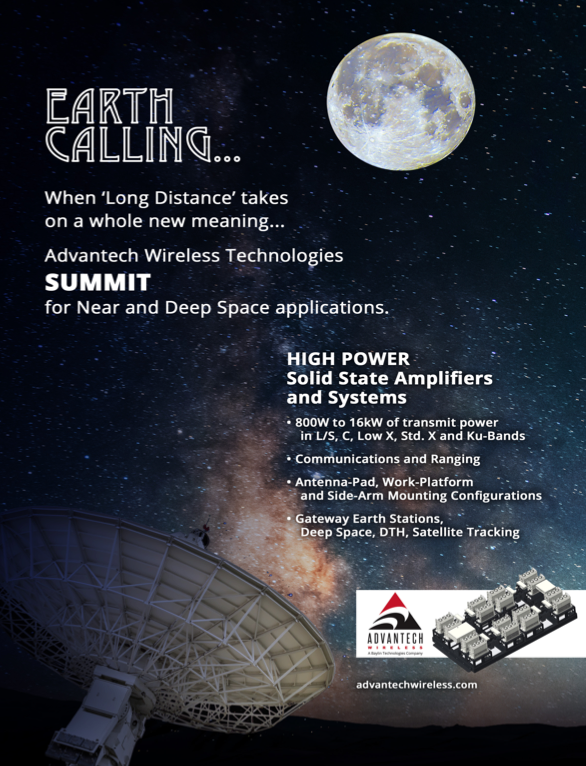Maj. Gen. (Ret.) Clint Crosier is Director of the AWS (Amazon Web Services) Aerospace and Satellite business that was established in 2020 to help accelerate innovation in the global aerospace and satellite industry. He leads a global team that is dedicated to working alongside commercial and government space customers to provide tailored, secure, and cost-effective cloud solutions to help them solve their toughest challenges. The team continues AWS’s long history of supporting customers in the space industry by helping commercial and government customers build satellites, conduct space and launch operations, and reimagine space exploration.

Prior to joining AWS, Crosier served 33 years in the U.S. Air Force and U.S. Space Force. His career includes a broad charge of experience in space operations, including a one-year deployment to the Middle East as the U.S. Central Command Director of Space Forces. He served in staff assignments in the U.S. Senate, Secretary of the Air Force’s Action Group, U.S. Air Force Office of Legislative Liaison, Office of the Secretary of Defense, Air Force Space Command and US Strategic Command. During his career, he operated GPS, SatCom, and missile warning satellite constellations, launched Atlas and Titan rockets putting national security payloads in orbit for the National Reconnaissance Office and NASA, and led Requirements and Strategy Development for the entire US Air Force. Prior to retiring from military service as a Major General, he was the lead planner and architect of the US Space Force, leading the stand up the first new military service in 72 years.
His military service awards include the Bronze Star for exemplary service in a combat zone, Air Force Space Command’s Sijan Leadership Award, two Defense Superior Service Awards, three Legions of Merit, and the NRO Director’s Gold Medal. His military academic awards include Distinguished Graduate and Top Graduate accolades at Squadron Officer School, Air Command and Staff College, and the Naval War College. In 2020, Crosier was inducted into the ISU Aerospace Engineering Hall of Fame. Since joining AWS, he has been recognized as “One of the Top 30 Space Execs to Watch” by Washington Exec, received the 2021 Pinnacle Award for Space Executive of the Year, and was named a Tech Titan by Washingtonian Magazine in 2021 and 2022.

Clint Crosier
AWS has a long history of supporting aerospace customers. Today, we work with organizations around the globe to reimagine their satellite missions, supporting their needs with global infrastructure and end-to-end lifecycle support so space customers can move faster, lower costs, collaborate, and focus on the mission outcomes instead of their infrastructure.
In addition, AWS provides powerful AWS artificial intelligence (AI) and machine learning (ML) tools designed to help streamline analysis of vast amounts of space-based data. These capabilities are helping satellite companies deliver unique insights and deeper analysis quickly and at scale.
Leveraging the infrastructure and advanced technologies available on the AWS cloud has opened a thriving ecosystem that established space players, entrepreneurs, innovators, scientists, and even students can more readily access, explore, discover, and innovate using space.
To help customers manage the massive amounts of space data they collect every day, AWS is committed to eliminating the traditional barriers encountered in a space environment like latency and bandwidth-limited networks. AWS has
a proven track record of providing powerful and secure edge compute, data storage and data processing capabilities to environments where there’s limited or no connectivity.
AWS is also making satellite operations more accessible with AWS Ground Station, which lets customers control satellite communications, process data, and scale their operations without having to worry about building or managing their own ground station infrastructure. Customers pay only for the actual antenna time used and can rely on the global footprint of ground stations to download data when and where they need it.
What type of solutions does AWS provide for geospatial customers?
Clint Crosier
Space data gives us detailed information about our planet that can help us improve life here on Earth. Government organizations, nonprofits, and commercial companies around the globe are using earth observation to help monitor extreme weather, safeguard natural resources, measure greenhouse gas emissions, preserve wildlife, and keep our communities safe.
Using AWS’ global infrastructure allows satellite customers to access thedata when and where they need it most, enabling global collaboration and rapid response for events such as severe flooding, wildfires, and severe storms, where speed is of the utmost importance.
AWS customers are proving the impact of this technology, and helping first responders make informed decisions. For example, Exci, a wildfire detection company, has used AWS to build a wildfire detection platform that processes more than 2.5 million images and over 30 GB of satellite data each day with an extremely high degree of accuracy. Exci uses AWS to detect potential wildfire outbreaks and inform first responders within just three minutes of ignition. This type of early detection and assessment can save lives and communities.
AWS Ground Station helps customers such as Satellogic and Capella Space uplink their space data directly into the cloud faster, and then process and transport that data around the world with low latency and a high level of security. This reduces data processing and analysis times for use cases like weather prediction or natural disaster imagery from hours to minutes or seconds.
AWS also supports geospatial customers in their efforts to use space data to monitor and study climate change, such as using satellite imagery to track changes in coastal erosion over time, or predict the weather. For example, Descartes Labs collects huge volumes of geospatial data derived from satellites, aircraft, and other sources. The company uses AWS artificial intelligence, machine learning, and high-performance compute (HPC) to store, process, and rapidly analyze huge volumes of raw data and then rapidly deliver analysis to customers. This analysis helps end users make timely decisions about complex issues such as climate change, food security, and the protection of natural resources.
Would you please expand on AI/ML innovation for satellite customers?
Clint Crosier
Satellites can collect upwards of 100 terabytes of data per day — that’s about 20,000 HD movies or 2,000 iPhones worth of data.
However, this data is useless if you can’t turn it into insights or action— it’s not helpful if you have to wait nearly a full day to send that data back down to Earth to make use of it. Satellite customers are discovering that advanced cloud technologies, such as AI and ML, can help to rapidly process and analyze their raw data, and transform it into insights that decision makers can use.
For example, in 2022 AWS demonstrated a faster, more efficient method to collect and analyze space data directly on an orbiting satellite in an on-orbit experiment with satellite partners D-Orbit and Unibap.
In this demonstration, AWS AI and ML services helped reduce the size of raw satellite images by as much as 42 percent, increasing processing speeds and enabling real-time inferences on-orbit. Providing this type of AWS edge capability onboard an orbiting satellite lets customers automatically analyze massive volumes of raw satellite data in orbit and only downlink the most useful images for storage and further analysis, driving down cost and the ability to make critical decisions faster.
AWS SageMaker for Geospatial capabilities make it easier for data scientists and ML engineers to build, train and deploy ML models faster using geospatial data. Satellite customers use Amazon SageMaker to build, train, and deploy ML models using geospatial data at increased speeds.
For example, Planet is using the simplicity and speed of Amazon SageMaker’s geospatial machine learning capabilities to build, train, and deploy ML models using Planet’s geospatial data at up to 10x the speed compared to previous methods.
As another example, the maritime industry leverages AI and ML-informed data to help monitor ship activity, assess wildlife health, track illegal fishing, and alert authorities of smuggling or ship-to-ship transfer of goods. GateHouse Maritime uses this capability to help protect whales off the coast of California.
How does AWS engage with startups?
Clint Crosier
AWS is committed to helping all our customers innovate and grow locally, regionally, and globally. Space startups are catalysts to support rapid innovation and address real-world challenges. Our annual accelerator program allows us to engage with innovative startups, helping them drive innovation and grow their businesses.
Now in its third year, the AWS Space Accelerator introduces emerging space startups from around the world to AWS tools and resources designed to help accelerate their development using the cloud. To-date, 33 startups around the globe have participated in this four-week business and mentorship opportunity, which provides a customized set of valuable business development resources, as well as AWS tools and solutions to enhance the mission of each startup.
What are some examples of satellite startups or other smallsat customers realizing success on AWS?
Clint Crosier
Space startups can make transformative contributions across the global space industry. Colorado-based startup and 2022 AWS Space Accelerator alum, Kayhan Space, uses AWS high performance compute to model how planned missions will behave in the real space environment, evaluate the safest, fastest, and most effective way to deploy satellites, increase space domain awareness, and predict spacecraft lifespans.
DigiFarm, a Norwegian agricultural startup established in 2019, is working to bring accurate and up-to-date field boundary data to farmers and government agencies. DigiFarm has developed software powered by a deep learning model that takes Sentinel-2 satellite imagery and builds additional, higher-definition layers on top of each geospatial data point using Amazon SageMaker and EC2. This has decreased the company’s field boundary model training costs by 70 percent compared to their previous approach.
Additionally, 2021 AWS Space Accelerator alum Orbital Sidekick is using AWS to collect, process, and analyze advanced hyperspectral data, helping to monitor tens of thousands of miles of pipeline infrastructure in order to deliver real-time insights.
Orbital Sidekick uses AWS infrastructure, compute, and scalability to process the data, and applies AWS ML algorithms to provide context for the information. This enables the company to identify and report detected leaks to operators within hours, rather than days or weeks as in traditional detection approaches. Energy companies can use these insights to minimize emissions, exceed regulatory requirements, and reduce their carbon footprints.
To view the Introduction to AWS Ground Station video, go to: youtu.be/pWzDdmASlA8elect this link...




